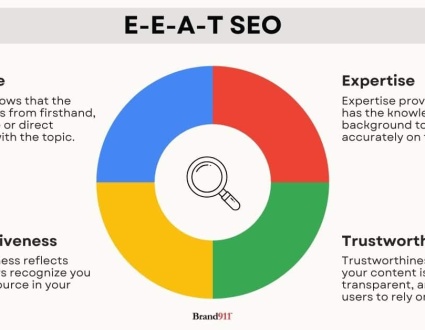
Ever stared at a blank page trying to figure out how to describe yourself in just a few sentences? Writing a professional bio can feel awkward, even for seasoned professionals.
But the truth is, your bio matters more than you might think.
It shapes first impressions, sparks new connections, and opens doors to career opportunities you might never see coming.
Whether someone finds you on LinkedIn, your company website, or a conference speaker page, your bio is often the first thing they read—and the first clue about who you are and what you offer.
Quick Summar: How to Write a Professional Bio
- Choose your voice
- Start with your name and title
- State your company or brand name
- Explain your professional role
- Share your philosophy or mission statement
- Highlight key achievements
- Mention personal and professional goals
- Add personal details to show personality
- Include a call-to-action
- Know your audience and platform
- Write like yourself, not a robot
- Keep it concise and focused
- Be authentic and honest
What Is a Professional Bio?
A professional bio is a short snapshot that tells people who you are, what you do, and why it matters. Think of it as a quick introduction that gives readers the essentials without overwhelming them.
Unlike a full personal history or a long résumé, a bio focuses on the highlights. It’s concise, purposeful, and written in plain language that anyone—even someone outside your industry—can understand.
Your bio isn’t just for one place. You’ll use it across websites, social media profiles, proposals, publications, and anywhere people look to learn about you. You might see it on your website’s About page, your homepage, your social media profiles like LinkedIn or Instagram, or even in the little author box under your blog posts.
In many ways, a professional bio is like a mini-resume. But instead of listing jobs and dates, it’s your chance to share your story, showcase your strengths, and make people remember you.
Why Your Professional Bio Matters
Your professional bio is your digital handshake. It’s often the first thing people read about you, and it can leave a lasting impression in just a few seconds.
A strong bio builds trust, helps you stand out in crowded job markets, and makes it easier for clients, employers, and peers to connect with you.
Whether someone stumbles across your LinkedIn profile, browses your company’s website, or reads your name in a proposal, your bio is working behind the scenes to represent you.
Your bio is a powerful tool for your personal brand. It shapes the story you tell about who you are and what you do, helping you control and improve your brand reputation.
There’s also an SEO advantage. An updated, keyword-friendly bio can help you appear in searches when people look for professionals in your field.
Done well, your bio can open doors to new projects, career moves, and opportunities you might never have expected.
How Long Should a Professional Bio Be?
Not every bio needs to be the same length. The right length depends on where you’re using it and who’s reading it.
Short Bio
50-100 words or about 4-8 sentences
Perfect for social media profiles, email signatures, or brief speaker introductions. It gives people a quick glimpse of who you are without overwhelming them.
Medium Bio
150-200 words
Ideal for LinkedIn summaries, company team pages, or online directories. This length lets you expand a bit by sharing your role, key achievements, and a touch of personality.
Long Bio
200-500 words
Great for personal websites, speaking engagements, or press kits. A longer bio gives space for storytelling, career highlights, and more personal details that help people connect with you on a deeper level.

How to Write a Professional Bio: 13 Steps
1. Choose Your Voice
Before you write a single word, decide on the voice you’ll use. Should your bio be written in the first person (“I am…”) or the third person (“Jane Smith is…”)?
- First-person is friendly and conversational. It’s great for creating personal websites, social media profiles, and places where you want to sound approachable and authentic.
- Third-person sounds more formal and is often used on company websites, speaker bios, or professional directories. It adds a layer of distance and objectivity, which can be helpful when highlighting achievements without sounding boastful.
Your voice should match both your audience and the platform.
And don’t forget tone. Whether professional, witty, or casual, choose a style that feels like you. Readers connect with bios that sound genuine.
2. Start with Your Name and Title
Begin your bio with a clear, simple introduction. Readers should know right away who you are and what you do.
If you’re writing in third person, start with your full name and your current title or role.
For example:
“Jane Smith is a Digital Marketing Manager at XYZ Agency.”
If you’re writing in first person, it might look like this:
“I’m Jane Smith, a Digital Marketing Manager at XYZ Agency.”
This sets the foundation for the rest of your bio and makes it easy for people to place you professionally.
3. State Your Company or Brand Name
If you’re building a personal brand or running your own business, make sure to mention your company name early in your bio. It helps people connect you with your business and makes your professional identity clear.
For example:
“Jane Smith is the founder of Smith Digital, an agency specializing in social media strategies.”
Even if you work for someone else, including your company name can boost credibility and help people understand where you fit professionally.
This small detail goes a long way in tying your name to your work and making you more memorable.
4. Explain Your Professional Role
Don’t stop at your job title. Go a step further and explain what you actually do each day. Titles alone can be vague. Help readers understand the value you bring to your work.
Instead of simply stating your position, add a line about your core responsibilities or the impact you make.
For example:
“Jane leads a team of strategists and manages multi-channel campaigns for global clients.”
This extra detail paints a clearer picture of your expertise and helps people see how your skills might connect to their needs.
5. Share Your Philosophy or Mission Statement
Your bio shouldn’t just say what you do. It should also share why you do it. This is where your philosophy or mission statement comes in.
Think about what drives you professionally. Is it helping clients succeed? Solving complex problems? Making a positive impact in your industry or community? Sharing your “why” helps people connect with you on a deeper level and understand your values.
For example:
“Jane believes digital marketing should empower small businesses to connect authentically.”
If you have a personal story that shaped your career path, include it briefly. A touch of storytelling makes your bio more engaging and memorable.
6. Highlight Key Achievements
A strong bio includes proof of what you’ve accomplished. Pick 2–3 of your biggest wins that show the impact you’ve made in your work.
Whenever possible, use numbers or concrete details to make your achievements stand out. Specifics grab attention and build credibility.
For example:
“Helped increase organic traffic by 150% in 12 months.”
But keep it simple. Write your achievements in plain language that anyone can understand. Avoid technical jargon or buzzwords that might confuse readers.
Instead of saying, “Executed integrated omnichannel engagement strategies,” try:
“Led marketing campaigns across social media, email, and web channels.”
Clear, relatable achievements help people quickly see your value.
7. Mention Personal and Professional Goals
Your bio isn’t just about where you’ve been. It’s also about where you’re going. Sharing your personal or professional goals helps people understand your direction and ambitions. It can also spark connections with those who share similar interests or might help you reach your next milestone.
For example:
“Jane’s goal is to help 100 small businesses grow sustainably through digital channels.”
Including your goals shows that you’re driven, future-focused, and actively shaping your career path.
8. Add Personal Details to Show Personality
A good bio isn’t just professional—it’s also personal. Adding a few details about your hobbies, family, hometown, or side projects helps readers see the person behind the job title.
Sharing personal touches makes you more relatable and memorable. It shows there’s more to you than work and builds connections on a human level.
For example:
“Outside work, Jane loves marathon training and coffee tastings.”
Think about what makes you unique or what you enjoy doing. A small glimpse into your life can make your bio stand out.
9. Include a Call-to-Action
Don’t leave readers hanging. End your bio with a simple call-to-action that tells people what to do next.
Do you want them to visit your website? Connect on LinkedIn? Reach out for a consultation? Make it clear and easy.
For example:
“Connect with Jane on LinkedIn to talk digital strategies.”
A good call-to-action turns a passive reader into an active connection and helps your bio work for you.
10. Know Your Audience and Platform
A great bio speaks directly to the people who’ll read it. Before you start writing, think about your audience and where your bio will appear.
- Recruiters: Keep it professional, clear, and focused on facts and achievements.
- Personal website: Use storytelling and let more of your personality shine through.
- Social media: Keep it shorter and casual, while still highlighting what makes you unique.
Check any platform guidelines before writing. Some places limit word count or prefer certain tones.
Different industries also have different norms:
- Medical: Highlight credentials, licenses, and formal expertise.
- Creative: Emphasize your unique style, artistic approach, or voice.
- Corporate: Focus on leadership, results, and measurable impact.
Tailoring your bio to fit both your readers and your platform makes it far more effective.
11. Write Like Yourself, Not a Robot
Your bio should sound like you, not a corporate robot. Avoid jargon, buzzwords, and tired phrases that make your writing feel stiff or generic.
Instead, keep your tone conversational and human. Imagine you’re talking to someone over coffee and explaining what you do.
A good test question:
“What would make someone remember me after reading this?”
Writing in your real voice makes your bio more engaging and helps people connect with the person behind the words.
12. Keep It Concise and Focused
Less is often more when it comes to writing a bio. Aim for clarity over lengthy details. Even if you’re writing a longer bio, keep each sentence purposeful and relevant.
Short bios should ideally stay under about 8 sentences. Focus on the details that matter most to your audience and skip anything that doesn’t serve your story or goals.
For example:
“If you’re a creative freelancer, emphasize your style and client benefits. For medical professionals, highlight credentials and specialties.”
A concise bio keeps readers engaged and makes a stronger impact.
13. Be Authentic and Honest
Authenticity is key to a strong professional bio. Avoid exaggerating your achievements or including details you can’t confidently stand behind.
Readers can sense when something sounds too good to be true, and nothing kills trust faster than fluff or hyperbole.
Instead, focus on real accomplishments and genuine experiences.
“Describe real achievements rather than fluff or hyperbole.”
An honest, authentic bio builds credibility and makes people more likely to trust and want to connect with you.
Short Example Bios
Professional Bio (Third Person):
Jane Smith is a Digital Marketing Manager at XYZ Agency, where she leads multi-channel campaigns for global clients. She’s passionate about helping brands connect authentically online and has increased client engagement by over 150%. Outside of work, Jane enjoys marathon training and exploring new coffee shops. Connect with her on LinkedIn.
Personal Bio (First Person):
I’m Alex Johnson, a freelance graphic designer who loves turning ideas into visual stories. I’ve worked with startups and nonprofits to create branding that stands out and makes an impact. My goal is to help more small businesses build strong visual identities. When I’m not designing, you’ll find me hiking local trails or experimenting with new recipes. Let’s connect and create something great!
How to Optimize Your Bio for SEO
A professional bio isn’t just about impressing readers. Your bios rank for your name in Google, making you easier to find online.
Here’s how to make yours SEO-friendly without sounding robotic.
- Use keywords naturally. Think about the terms people might search to find someone like you. If you’re a marketing consultant, words like “digital marketing,” “content strategy,” or “SEO specialist” might fit your bio. But weave them in naturally, so your bio still reads smoothly.
- Avoid keyword stuffing. Repeating the same phrases over and over makes your bio awkward and less effective. Focus on clear, engaging writing first.
- Include your name strategically. Make sure your full name appears near the beginning of your bio, helping search engines link your name to your professional topics.
- Don’t duplicate bios everywhere. Posting the exact same bio across multiple platforms can hurt your search rankings. Instead, keep your core message consistent but vary the wording and details for each platform.
- Keep it updated. Refresh your bio regularly to reflect new achievements and keep search engines interested in your profile.
Also, link to your website from your social media bios to drive traffic and build your online presence.
Want to dive deeper into writing SEO-friendly content beyond your bio? Check out our guide.
Mistakes to Avoid When Writing Your Bio
Even seasoned professionals slip up when writing their bios. Here are some common mistakes to watch out for:
- Overusing buzzwords. Phrases like “results-driven” or “dynamic professional” sound impressive but rarely say anything unique about you.
- Being too generic. Vague descriptions don’t help readers remember you or understand what makes you different.
- Making it too long. Keep your bio concise and focused. Long paragraphs lose attention fast.
- Forgetting to update it. An outdated bio signals you’re not active or engaged in your field.
- Skipping a call-to-action. Always tell readers what you want them to do next—connect, email, visit your site.
- Trying to tell your entire life story. Focus on what’s relevant right now for your career or audience.
- Writing for everyone. Instead, write for one clear reader so your message feels personal and direct.
- Being inauthentic or exaggerating. Authenticity builds trust—stick to real facts and achievements.
- Using technical language. Avoid jargon that lay readers won’t understand. Aim for plain, relatable language instead.
Avoiding these pitfalls will help your bio stay clear, memorable, and effective.
Frequently Asked Questions
Should I write in first person or third person?
It depends on where your bio will appear. First person (“I am…”) feels personal and conversational, great for LinkedIn or personal websites. Third person (“Jane Smith is…”) sounds more formal and fits company sites or speaker bios.
What if I don’t have many achievements?
Focus on your skills, goals, and what drives you. Mention projects, education, or volunteer work that shows your potential. Everyone has something valuable to share.
How often should I update my bio?
Review your bio at least every six months—or sooner if you’ve changed jobs, earned new credentials, or hit big milestones.
How do I balance professionalism with personality?
Keep your language clear and professional, but don’t be afraid to show your human side. A little personality makes you memorable.
Should I include personal interests or hobbies?
Yes! Sharing hobbies or passions makes you relatable and helps people connect with you beyond your job title.
Should I adjust my bio for different industries or audiences?
Absolutely. A bio for healthcare will look different than one for creative fields. Tailor details and tone to fit each audience.
How vulnerable should I be in my bio?
Share only what you’re comfortable with. A bit of honesty and personal story can be powerful, but you don’t need to overshare.
How short should a “short bio” be?
Aim for 4-8 sentences. Enough to tell your story, but brief enough to hold attention.
Should I include my professional goals in my bio?
Yes! Mentioning goals shows direction and ambition, helping people see where you’re headed.
How do I write about my achievements so anyone can understand them?
Use simple, clear language. Skip jargon and explain results in plain terms that someone outside your field could grasp.
Conclusion
Your professional bio shouldn’t feel overwhelming. Follow these steps and you’ll craft a bio that opens doors, builds trust, and truly represents who you are.
Key takeaways:
- Keep it clear, concise, and tailored for your audience.
- Show your personality while staying professional.
- Use specific achievements and avoid jargon.
- Refresh your bio regularly to stay current.
Ready to take yours to the next level? Check out our Personal Branding Services at Brand911.
About us and this blog
We are a digital marketing company with a focus on helping our customers achieve great results across several key areas.
Request a free quote
We offer professional SEO services that help websites increase their organic search score drastically in order to compete for the highest rankings even when it comes to highly competitive keywords.
Subscribe to our newsletter!
More from our blog
See all postsRecent Posts
- How to Distribute a Press Release (Without Wasting Time or Money) December 23, 2025
- What Is SEO Content? A Comprehensive Guide December 18, 2025
- How to Rebrand Yourself: A Practical 5-Step Plan for Professionals December 16, 2025














Recent Comments